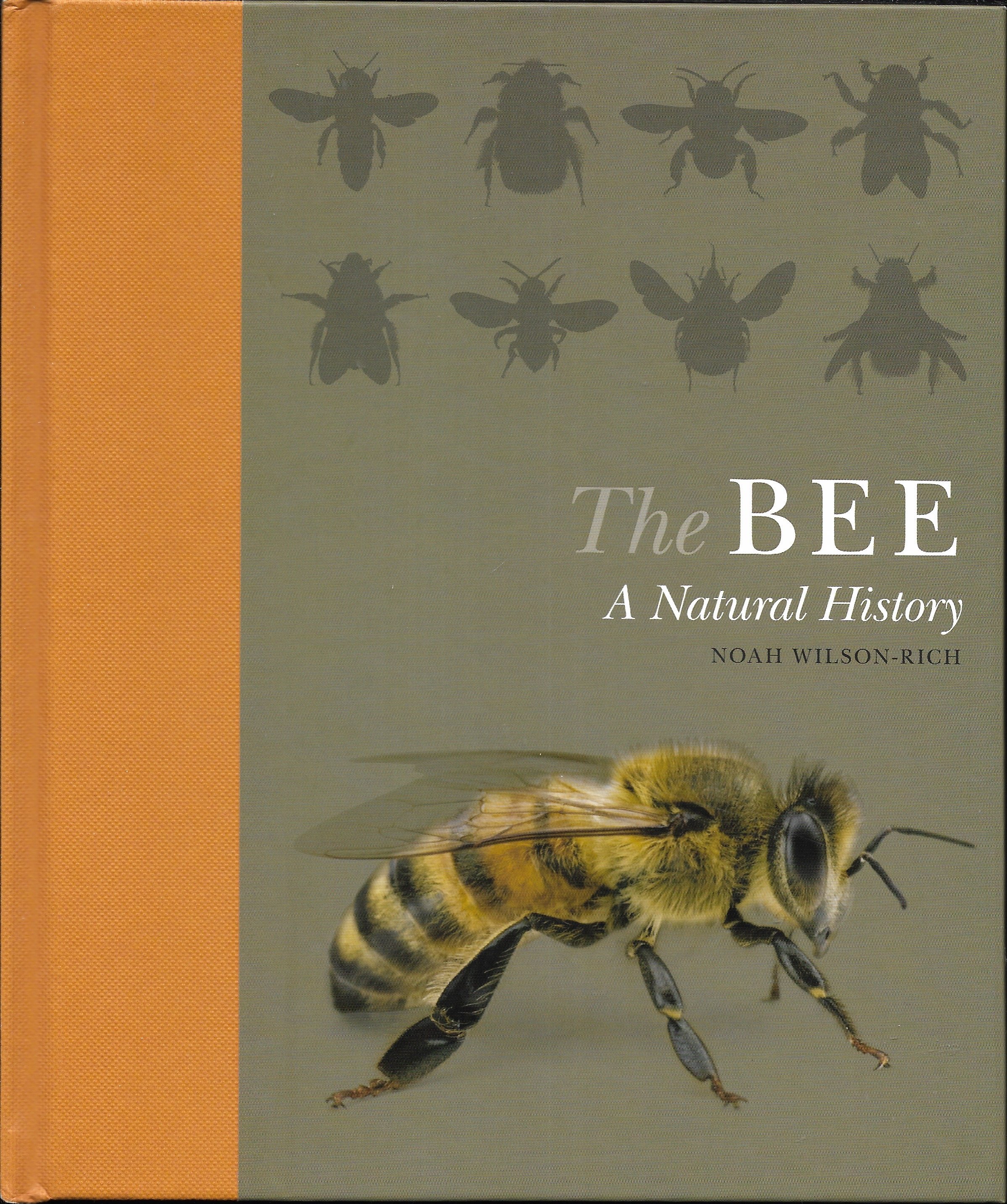The Bee: A Natural History
Noah Wilson-Rich, 2014, Princeton Univ Press, 9780691161358, 222 pages, hardcover.
Fine, like new.
Bees pollinate more than 130 fruit, vegetable, and seed crops that we rely on to survive. Bees are crucial to the reproduction and diversity of flowering plants, and the economic contributions of these irreplaceable insects measure in the tens of billions of dollars each year. Yet bees are dying at an alarming rate, threatening food supplies and ecosystems around the world. In this richly illustrated natural history of the bee, Noah Wilson-Rich and his team of bee experts provide a window into the vitally important role that bees play in the life of our planet. Earth is home to more than 20,000 bee species, from fluorescent-colored orchid bees and sweat bees to flower-nesting squash bees and leaf-cutter bees. This book takes an incomparable look at this astounding diversity, blending an engaging narrative with practical, hands-on discussions of such topics as beekeeping and bee health. It explores our relationship with the bee over evolutionary time, delving into how it came to be, where it stands today, and what the future holds for humanity and bees alike. Provides an accessible, illustrated look at the human-bee relationship over time Features a section on beekeeping and handy go-to guides to the identification, prevention, and treatment of honey bee diseases* Covers bee evolution, ecology, genetics, and physiology* Includes a directory of notable bee species* Presents a holistic approach to bee health, including organic and integrated pest management techniques* Shows what you can do to help bee populations.
Noah Wilson-Rich, 2014, Princeton Univ Press, 9780691161358, 222 pages, hardcover.
Fine, like new.
Bees pollinate more than 130 fruit, vegetable, and seed crops that we rely on to survive. Bees are crucial to the reproduction and diversity of flowering plants, and the economic contributions of these irreplaceable insects measure in the tens of billions of dollars each year. Yet bees are dying at an alarming rate, threatening food supplies and ecosystems around the world. In this richly illustrated natural history of the bee, Noah Wilson-Rich and his team of bee experts provide a window into the vitally important role that bees play in the life of our planet. Earth is home to more than 20,000 bee species, from fluorescent-colored orchid bees and sweat bees to flower-nesting squash bees and leaf-cutter bees. This book takes an incomparable look at this astounding diversity, blending an engaging narrative with practical, hands-on discussions of such topics as beekeeping and bee health. It explores our relationship with the bee over evolutionary time, delving into how it came to be, where it stands today, and what the future holds for humanity and bees alike. Provides an accessible, illustrated look at the human-bee relationship over time Features a section on beekeeping and handy go-to guides to the identification, prevention, and treatment of honey bee diseases* Covers bee evolution, ecology, genetics, and physiology* Includes a directory of notable bee species* Presents a holistic approach to bee health, including organic and integrated pest management techniques* Shows what you can do to help bee populations.
Noah Wilson-Rich, 2014, Princeton Univ Press, 9780691161358, 222 pages, hardcover.
Fine, like new.
Bees pollinate more than 130 fruit, vegetable, and seed crops that we rely on to survive. Bees are crucial to the reproduction and diversity of flowering plants, and the economic contributions of these irreplaceable insects measure in the tens of billions of dollars each year. Yet bees are dying at an alarming rate, threatening food supplies and ecosystems around the world. In this richly illustrated natural history of the bee, Noah Wilson-Rich and his team of bee experts provide a window into the vitally important role that bees play in the life of our planet. Earth is home to more than 20,000 bee species, from fluorescent-colored orchid bees and sweat bees to flower-nesting squash bees and leaf-cutter bees. This book takes an incomparable look at this astounding diversity, blending an engaging narrative with practical, hands-on discussions of such topics as beekeeping and bee health. It explores our relationship with the bee over evolutionary time, delving into how it came to be, where it stands today, and what the future holds for humanity and bees alike. Provides an accessible, illustrated look at the human-bee relationship over time Features a section on beekeeping and handy go-to guides to the identification, prevention, and treatment of honey bee diseases* Covers bee evolution, ecology, genetics, and physiology* Includes a directory of notable bee species* Presents a holistic approach to bee health, including organic and integrated pest management techniques* Shows what you can do to help bee populations.
